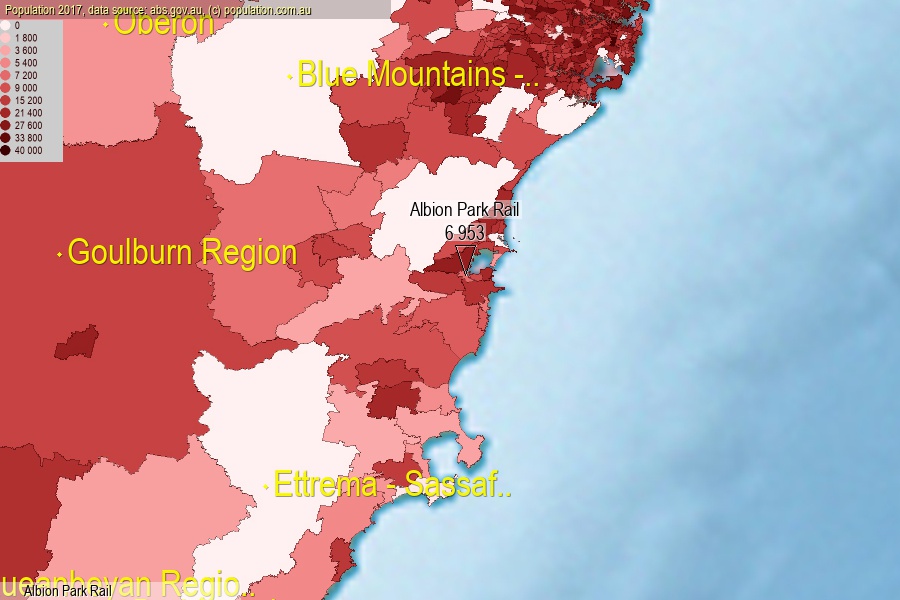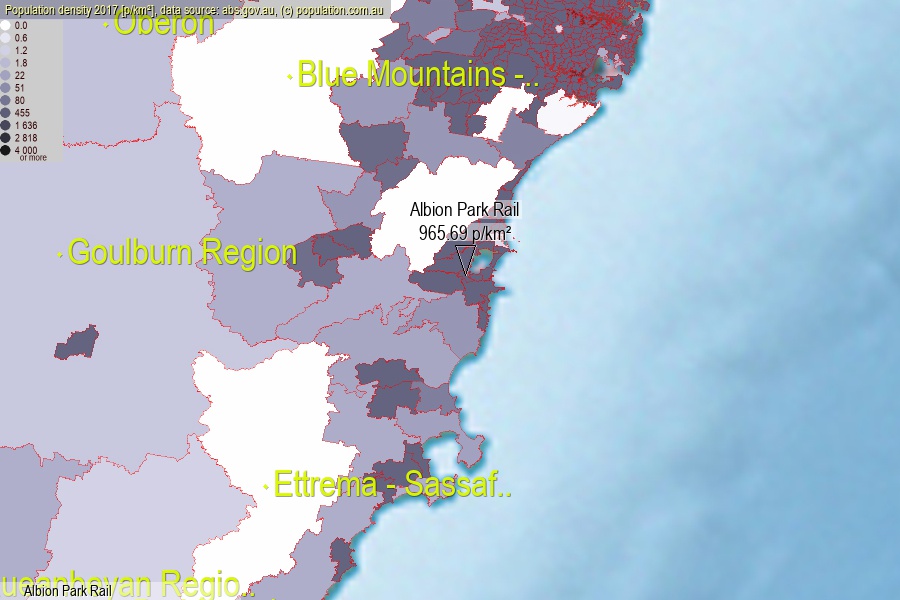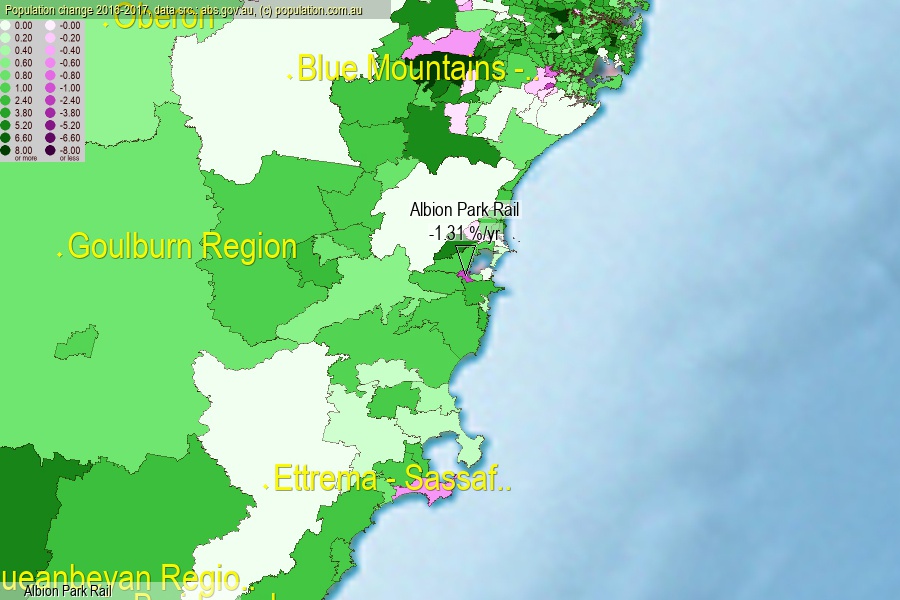 population.com.au
population.com.auLast official estimated population of Albion Park Rail (as Statistical Area Level 2) was 6 953 people (on 2017-06-30)[2]. This was 0.03% of total Australian population and 0.087% of NSW population. Area of Albion Park Rail is 7.20 km², in this year population density was 965.69 p/km² . If population growth rate would be same as in period 2016-2017 (-1.31%/yr), Albion Park Rail population in 2025 would be 6 259. [0]



Click to enlarge. Albion Park Rail is located in the center of the images.
Population [people], population density [p./km²] and population change [%/year] [2]
View borders » (new window) [4]
[1991-1992] +2.83 %/Yr.
[1992-1993] +2.93 %/Yr.
[1993-1994] +4.98 %/Yr.
[1994-1995] +3.02 %/Yr.
[1995-1996] +1.61 %/Yr.
[1996-1997] -0.41 %/Yr.
[1997-1998] -0.58 %/Yr.
[1998-1999] -0.27 %/Yr.
[1999-2000] -0.91 %/Yr.
[2000-2001] -0.67 %/Yr.
[2001-2002] -1.82 %/Yr.
[2002-2003] -1.29 %/Yr.
[2003-2004] -0.57 %/Yr.
[2004-2005] -0.94 %/Yr.
[2005-2006] -1.16 %/Yr.
[2006-2007] -0.29 %/Yr.
[2007-2008] +0.50 %/Yr.
[2008-2009] +0.77 %/Yr.
[2009-2010] +0.51 %/Yr.
[2010-2011] -0.40 %/Yr.
[2011-2012] -0.23 %/Yr.
[2012-2013] -0.22 %/Yr.
[2013-2014] -0.51 %/Yr.
[2014-2015] -0.75 %/Yr.
[2015-2016] -0.94 %/Yr.
[2016-2017] -1.31 %/Yr.
[0] Calculated with linear interpolation from officially estimated population
[1] Read more about SA2 and Australian Statistical Geography Standard (ASGS) on abs.gov.au
[2] Population data from Australian Bureau of Statistics (Population and density: 2017; change: 2016-2017)
[3] Digital Boundaries: Australian Statistical Geography Standard (ASGS) 2016.
[4] Border coordinates are simplifyed using Ramer-Douglas-Peucker algorithm.